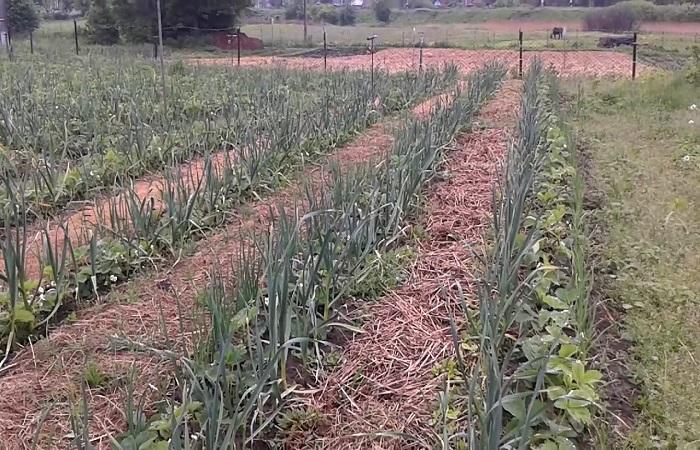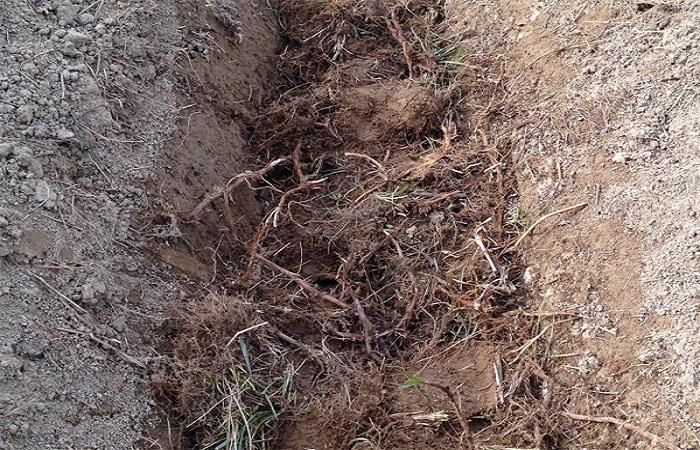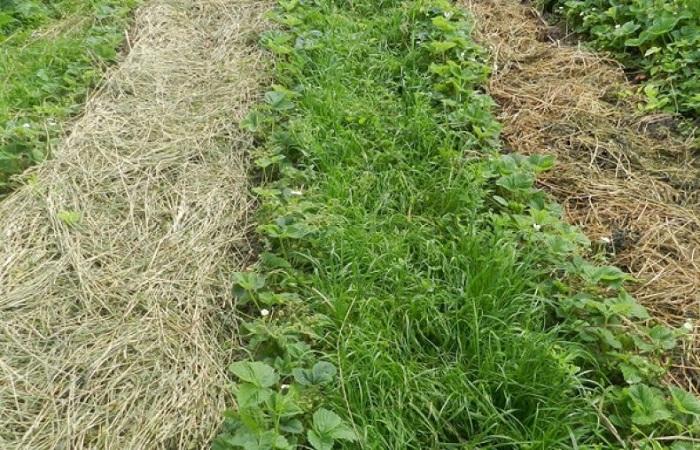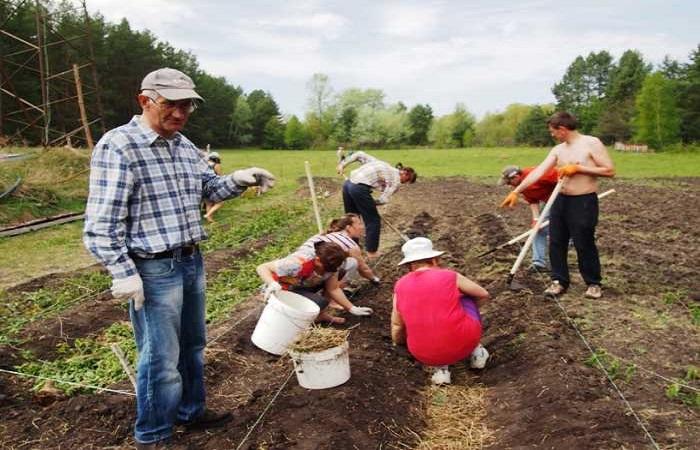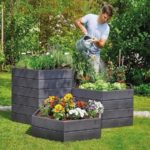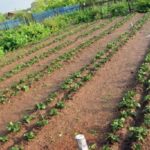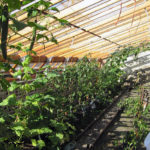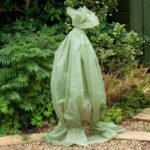Organic farming methods that can be used on private plots are varied. Let's look at the operating principle of Rozum's beds, their advantages and disadvantages. The sequence of constructing beds, laying organic matter in them, the process of watering with a solution and mulching. How to plant cultivated plants in the beds and properly care for the beds during the season.
How does Rosum's bed work?
This arrangement of beds was invented by the author for hot and dry regions in order to preserve soil moisture. But they can also be arranged in cold regions - the heat generated by organic matter will warm up the plants from below.
Rosum's beds are arranged like this: in the middle there is a trench with sides sloping towards the center, into which organic matter is placed. Organic residues rot and become food for plants planted on the ridges; moisture reaches the roots and condenses on the organic matter in the trench. The ridges are located on the sides of the trench, and between them are paths. The trench and ridges are covered with mulch, which retains moisture.
Advantages and disadvantages
Rozum's beds have the following advantages over regular ones:
- work well on uncultivated and unkempt lands;
- the yield increases by a third, regardless of the variety or crop;
- minimal maintenance required, no need to dig up the soil;
- can be created not only before the growing season, but also in the fall, before wintering;
- The compost is in close proximity to the roots of the plants, where they get their food from.
The disadvantage of the Rozuma bed is that it occupies quite a lot of area, which is occupied by trenches and cannot be used for growing plants.
How to make such a bed?
It is not difficult to build it on any personal plot. You will need a shovel or hoe, organic materials: medium-thick and small branches, grass, tops, leaves, pine needles, remains of vegetables and fruits, that is, everything that fits into the compost.
Marking
Before you start marking, you need to remove all plant debris and weed roots from the area. The length can be arbitrary, but it is not recommended to make a groove too long. The width of the bed is made according to the following scheme:
- trench for organic matter – 60 cm;
- two ridge beds on the sides - 30 cm each;
- paths – 60 cm.
If you need to create several Rosum beds, everything needs to be repeated.
Groove
The depth of the trench or groove is small - 25 cm, that is, the bayonet of a shovel. It is made wedge-shaped. The selected soil is sent to the ridges, due to which they rise above the ground.
Organic
Organic matter is placed in the groove in 3 layers. At the bottom there are quite thick branches, wood chips, pieces of boards, that is, something that does not rot for a long time. Medium and small sized branches are laid on top of them. This layer will collect moisture, condense it, then it will flow to the roots of the plants on the ridges. At the same time, a layer of thin branches will serve as an aerating layer; air will also flow to the roots.
Then a layer of dry grass or leaves is laid, followed by a layer of fresh grass, tops, and kitchen waste. Everything is lightly compacted. The organic layer should reach ground level.
Solution
To make decomposition go faster, the organic matter in the groove is watered with a solution of EM preparations. The drug not only enhances and accelerates fermentation processes, but also prevents rotting of the mass. The presence of a solution helps to control the processes occurring in organic residues, fermentation proceeds correctly and at an accelerated pace. The drug also stimulates the development of microorganisms that process grass; they release carbon dioxide, which is also consumed by plants.
Since the organic matter in the groove will settle over the course of the season, it needs to be added, and each new layer must be watered again with a solution of biological preparations.
Mulching
The very last layer on the bed should be made of dry grass, straw, hay, that is, be mulching. The same layer is laid around the plants on the ridges.Mulch prevents moisture loss, regulates evaporation, prevents the beds from becoming overgrown with weeds, and prevents the soil from overheating or quickly cooling.
Rules for planting crops
Since Rozum’s beds are similar in structure and purpose to warm ones, they warm up earlier, so any vegetables can be grown on them, including early and cold-resistant greens. If this is not a cold-resistant crop, then it should be planted in the beds when the soil warms up to 10-15 ºС. In the year the beds are created, it is advisable to plant plants that need to be hilled; this procedure will keep the beds in order.
The planting scheme depends on the specific crop, but since the width of the ridges is small, there is a lot of free space, and there is enough nutrition, the plants will be fully provided with nutrients and light, even if they are planted a little denser than usual. Even combined or compacted plantings are allowed, and all crops give a good harvest.
Green manure plants of any kind are sown on the paths, the mowed mass of which is used to replenish the grooves when the organic matter settles. In the fall, you can also put the tops of the cultivated crop there, if there are no diseases on them, sprinkle them with a layer of soil and plant winter green manure.
Rosum's beds can be called intensive, because they manage to get more yield than ordinary ones, even with compacted plantings. During the season, if the soil is fertilized, you can practically do without fertilizing and reduce the number of waterings.There will be no need to weed, arrange separate compost bins, burn branches left after pruning, and autumn foliage. All this can be placed in the grooves of Rosum's beds.

